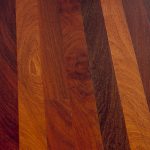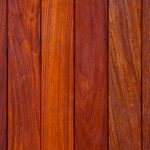What are your outdoor spring projects? Maybe you, like plenty of other American families, are hoping to spend more time outside this summer—and what better way to do that than on a brand new deck?
Today, let’s talk about the best building materials for creating your very own deck!
A Note on Today’s Lumber Prices
 If you’d asked us a year ago, we would’ve said that pressure-treated wood was, hands down, the most cost-effective material for building a deck. Unfortunately, things have changed since then.
If you’d asked us a year ago, we would’ve said that pressure-treated wood was, hands down, the most cost-effective material for building a deck. Unfortunately, things have changed since then.
During the spring and summer months in 2020, it seems that everyone collectively decided to start an outdoor building project, and lumber started selling like hotcakes. As lumber became harder to find, prices skyrocketed to meet demand, and shortages soon became widespread.
Production mills hadn’t anticipated that deck DIY would have a renaissance in 2020! The supply of lumber just couldn’t keep up with the boom in consumer demand. Even during the 2020 winter season, the demand was unrelenting—and winter is usually when lumber sales are at their lowest point.
So what does that mean for you, building your deck in 2021? Well, it probably means that lumber will be much less readily available and a lot more expensive. But that doesn’t mean building a deck in 2021 is off the table. If you’re looking for the best materials for a budget-friendly and long-lasting deck, there are still plenty of options, both lumber and non-lumber alternatives.
Lumber Decking Options
Ipe 
Ipe (also known as Brazilian walnut) deck boards are super strong, long-lasting, and attractive. With its gorgeous dark-brown hue and minimal maintenance needs, ipe is a great premium material for your DIY project – but it’s also quite expensive and difficult to obtain. And believe it or not, the hardness of this wood can also be considered a con: its strength makes it tricky to work with and reshape to your needs.
Redwood
Redwood is another beautifully colored, strong, and long-lasting lumber. Like ipe, it requires little to no maintenance, and without sealing, it even fades to a lovely and rich reddish-brown color. But it is also expensive and harder to find than other lumber types. Unlike ipe, however, it does become splintery over time, making it dangerous for bare feet.
Cedar
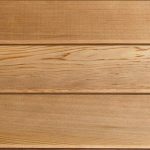 Much like redwood, cedar is strong and attractive, and in some cases, needs minimal maintenance. However, without treatment, it will quickly turn from light amber to silvery-grey. Some people like that and others don’t, so whether you treat it is up to personal preference, though it can also be painted. Like redwood, it can become splintery over time but is somewhat less expensive than other premium woods like ipe.
Much like redwood, cedar is strong and attractive, and in some cases, needs minimal maintenance. However, without treatment, it will quickly turn from light amber to silvery-grey. Some people like that and others don’t, so whether you treat it is up to personal preference, though it can also be painted. Like redwood, it can become splintery over time but is somewhat less expensive than other premium woods like ipe.
Pressure-treated wood
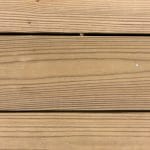 To make them suitable for deck building, softwoods like Douglas Fir, Hemlock, and various types of pine are pressure-treated. This is done by injecting the lumber with a preservative called copper azole, which helps ward off pests and fungi. Pressure-treated lumber used to be super cheap and readily available, although not so much these days, it seems. However, what pressure-treated wood lacks in upfront cost, it makes up for in maintenance and repair fees. If not maintained, pressure-treated wood can easily splinter and crack, making it not only aesthetically unappealing but possibly even dangerous to walk on. It’s also worth noting that pressure-treated lumber is graded based on cosmetic appearance, and the higher the grade, the more expensive it will be.
To make them suitable for deck building, softwoods like Douglas Fir, Hemlock, and various types of pine are pressure-treated. This is done by injecting the lumber with a preservative called copper azole, which helps ward off pests and fungi. Pressure-treated lumber used to be super cheap and readily available, although not so much these days, it seems. However, what pressure-treated wood lacks in upfront cost, it makes up for in maintenance and repair fees. If not maintained, pressure-treated wood can easily splinter and crack, making it not only aesthetically unappealing but possibly even dangerous to walk on. It’s also worth noting that pressure-treated lumber is graded based on cosmetic appearance, and the higher the grade, the more expensive it will be.
Non-Lumber Decking Alternatives
Composite
Composite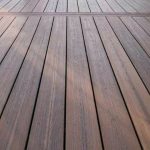 decking is made to mimic the look of wood while minimizing the maintenance needs associated with lumber. Made from equal parts plastic and wood fiber, it offers you the best of both worlds. Because the upfront cost is higher than lumber, composite is an excellent long-term investment for your home. It stays looking clean and fresh for many years, and it has fantastic structural integrity. The few downsides to composite include the possibility of scuffing and becoming hot to the touch on sunny days.
decking is made to mimic the look of wood while minimizing the maintenance needs associated with lumber. Made from equal parts plastic and wood fiber, it offers you the best of both worlds. Because the upfront cost is higher than lumber, composite is an excellent long-term investment for your home. It stays looking clean and fresh for many years, and it has fantastic structural integrity. The few downsides to composite include the possibility of scuffing and becoming hot to the touch on sunny days.
Aluminum
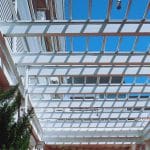 Aluminum is lightweight, pest-proof, and super strong. Despite being metal, coated aluminum stays cooler in the sun—even more so than even composite! Perhaps the only downside of aluminum is the price tag. The upfront cost of an aluminum deck can be a bit daunting, but think of it this way: aluminum decking is solid, built to last, and requires almost zero maintenance. What you invest upfront, you save in long-term care costs. If you plan to keep living in your home for 15+ years, you can justify the price of investing in aluminum.
Aluminum is lightweight, pest-proof, and super strong. Despite being metal, coated aluminum stays cooler in the sun—even more so than even composite! Perhaps the only downside of aluminum is the price tag. The upfront cost of an aluminum deck can be a bit daunting, but think of it this way: aluminum decking is solid, built to last, and requires almost zero maintenance. What you invest upfront, you save in long-term care costs. If you plan to keep living in your home for 15+ years, you can justify the price of investing in aluminum.
If you’re planning to build a deck this summer, we want to hear about it! Connect with Winthorpe today. We’ve got plenty of ideas to make it the best summer ever.



